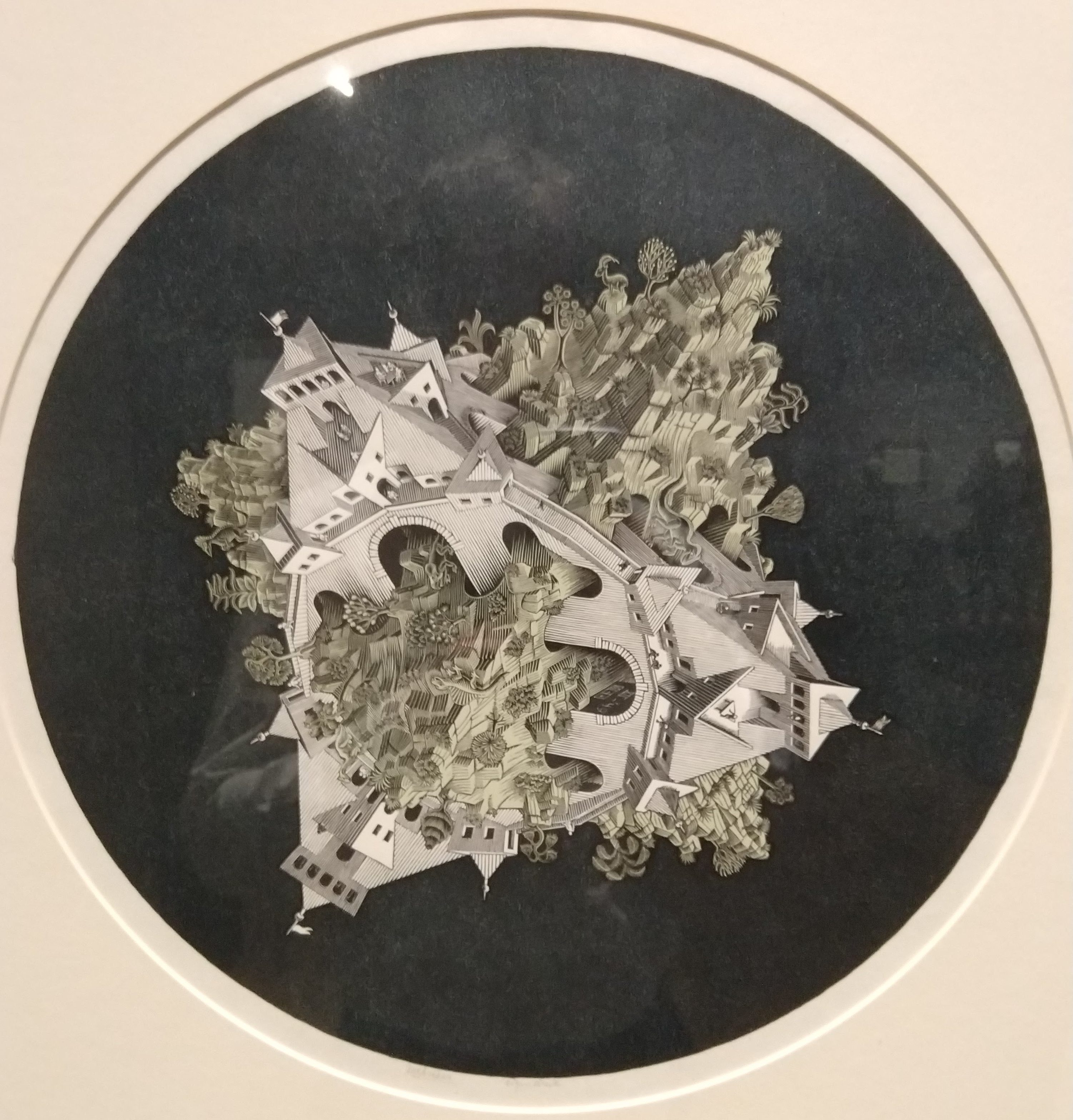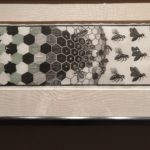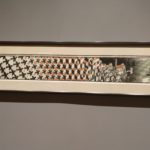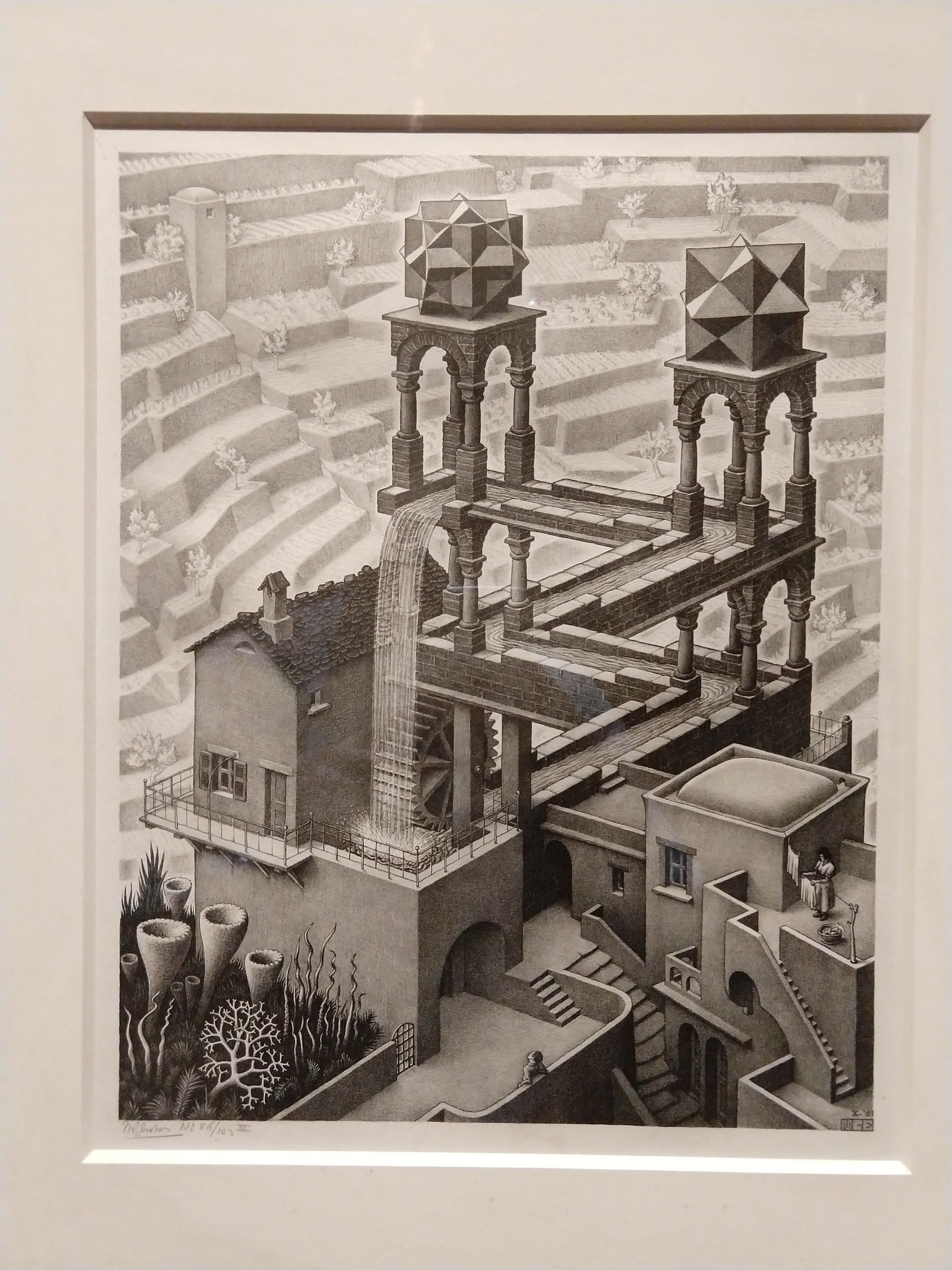“Impossible” Journeys
This is one of those posts about a place not so far away from home — the Museum of Fine Art in Boston. But more that the physical place, I have some thoughts about the places one of the special exhibits can take you. One important thing about the MFA though – it’s free after 4 pm on Wendesdays. Amazing!
Sofia and I went to see the special exhibit bringing work by Maurits Cornelis Escher to Boston for the first time ever. It’s titled “Infinite Dimensions” and Escher is famous for creating paradoxical scenes as well as playing with time and space in his prints.
I really enjoy how Esher’s art is very grounded and rational — stemming from his work with geometry, tessellation and other technical considerations, while at the same time it’s irrational and abstract. Most abstract contemporary and modern art is very unappealing to me — maybe I’m just not creative enough. But Escher stretches reality in just the right way for me. For me, the exhibit was really about the journey to the impossible places that Escher is able to create for us.

Here is “Double Planetoid,” in which a binary world arises out of the void, showing the natural and the man-made intertwined but distinct from each other. Much of Escher’s work has this connection to the natural world — his most common themes for tessellations are birds, frogs, and fish. While sometimes the human and the wild interact with each other, in “Double Planetoid,” the city is completely sanitized, with nature outside of it’s walls and guards on watch. The natural world is likewise untouched by humanity. Although they are intertwined with each other they don’t really touch.
Sometimes, I feel like this is how a lot of people want our planet to actually function, and maybe it would be better if it did. Cities and highways in so many cases were built without consideration for effects on or connections with the natural world. But humans always spill over into the world around us. Most of our wild places are gone now, or walled in to protect them. Escher “Double Planetoid” took me briefly on a journey to a world where the wilderness was really pushing back on the build environment. Something we don’t confront much in the U.S. these days.
This next piece was definitely my favorite – it’s over 12 feet long and covers an amazing number of topics. It’s called “Metamorphosis II” and the artist masterfully connects geometry to detailed scenes of a honeycomb and bees on one side, before dissolving back into simple shapes and after moving through several tessellations to a coastal city scene — which is also part of a chess game. Lizards, birds, and fish are all present.
Escher completed it after leaving Italy as the political climate started to deteriorate in the lead-up to WWII. However, the coastal village couldn’t be anywhere else except the Mediterranean and it makes me feel the same wanderlust that took the Dutchman to Italy in the first place. It also reminds me of the Torre de Belem outside of Lisbon and other river defenses from from our last trip to Span and Portugal. These old cities still hug the water features that were the arteries of their economy centuries ago.
In Escher’s depiction the promenade along the water is full of people walking, and for me the buildings and the narrow winding streets speak of people who see their neighbors on a daily basis and know what’s happening in their community. In a way, this is a further point of symmetry with the beehive on the opposite side of the print. Both are close-knit and cooperative communities. Something I feel like is so lost in most of the U.S. and probably other modern economies today.
That all these were done as prints, intricately fitting together and yet so crisp is amazing. “Metamphosis II” has half a dozen colors and making woodcuts to fit together perfect must have been exhausting.
There’s a few more pieces that I found really powerful. “Day and Night” seems like a somewhat less common theme for Escher. None of his other most popular work really depicts the countryside. In this piece, birds arise directly out of the tile farm plots around a rural Dutch community. The night and day are symmetrical across the vertical center, with white birds flying into the night and black ones into the day. The town, or two towns, lie along a slow moving river, with ships sailing away and roads radiating out from the community.
For another really abstract impossible journey, “Other World” takes us into outer space to a crater strewn celestial object. An impossibly wise looking bird stares in towards us with galaxies revolving in the background. The building we look out from could be a temple to the insignificance of the observer in the universe.
Of the scenes of impossible building geometries and people’s lives with-in them, I’ve chosen to share “Waterfall.” It combines the monotony of daily life, with some truly otherworldly vegetation and a waterwheel with a closed supply system. Perhaps I also enjoy how this piece again connects people to the land, so that the alienation isn’t complete, but is still tied to the terraced fields behind the focal point.
There were over 50 pieces in total which included some of Escher’s most famous work. Here are some of the other popular pieces that are on display until the end of May: Ascending and Descending, Belvedere, Print Gallery, Three Worlds, Bond of Union, Relativity, Order and Chaos, Puddle, Drawing Hands, Eye, Verbum, Reptiles. If you can’t make it to the MFA, you can check these out online at the M.C. Escher official page.








